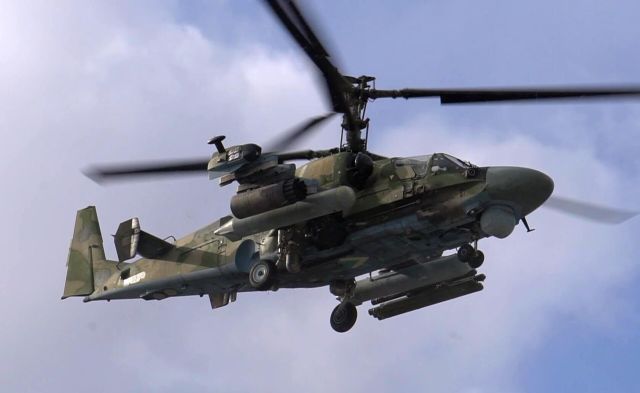Military expert Andrey Frolov - about the big changes in the arms markets in connection with Russia's military operation in Ukraine
The Special Military Operation (SVO) of the Russian Armed Forces in Ukraine has not yet ended, but a number of conclusions can already be drawn from it. One of them has to do with the arms market, since both Russia and Ukraine are major players in it. Obviously, the year 2022 has brought serious changes, and this market will not be the same.
The first and most important result will be the final loss of Ukraine from the number of major arms exporters. This fact will have many consequences, which should be discussed separately.
With the withdrawal of Ukraine from the world arms market, such an important segment of it as the supply of inexpensive Soviet weapons is actually disappearing. This process naturally began to slow down after the events of 2014-2015. Now the supply of Soviet weapons will finally come to naught due to their physical absence.
It is also important that, following the results of the special operation, Ukraine will completely lose the enterprises where the repair and modernization of Soviet equipment was carried out, which will not allow both exporting from Russia and repairing foreign customers' equipment — primarily aviation and armored vehicles. This means that, in fact, Russia and, to some extent, Belarus will remain the only providers of such services.
For the same reason, Ukraine will completely withdraw from the market of new products with its direct analogues of Russian equipment (for example, T-90 - Oplot, BTR-82 - BTR-3, Kornet-E–Korsar ATGM, R-73 and RVV-MD air-to-air missiles Also, import programs that focused on the supply of certain Ukrainian components and products (for example, Turkish Akinci UAVs or Pakistani Al-Khalid tanks) will be put at risk. Obviously, local manufacturers will have to look for a replacement for them — it is likely that Russian production.
Also, there is virtually no alternative to Ukraine becoming a net importer of weapons, and exclusively of Western and Turkish production. Ukraine's arms imports have been growing steadily since 2015, peaking in 2021-2022. After complete demilitarization, Ukraine is likely to repeat the path of Georgia after 2008. Some of the supplies will be carried out on the basis of already concluded contracts, but the vast majority will still be provided as part of the declared Western military assistance and, probably, on credit. As a "carrot", part of the supplied equipment will be assembled and serviced at individual remaining and restored Ukrainian enterprises.
No less changes are expected for Russian arms exports. First of all, it will be affected by unprecedented sanctions. However, most of the Russian subjects of military-technical cooperation have already been under sanctions for a long time. Despite this, they have adjusted the work, which allows us to count on the fact that this time a solution will be found, although the general background for the work will become significantly more complicated. Restrained optimism is given by the fact that no major work has been carried out with the majority of unfriendly countries on the line of military-technical cooperation, and the main importers of Russian weapons can resist American pressure.
Another important circumstance will be the fact of the widespread use of modern Russian developments in operations against not just some armed formations, but one of the largest European armies equipped with the most modern Soviet weapons systems, some of which have been modernized and refined, as well as an army with significant experience in combat operations and shelled personnel, part which was trained according to NATO standards. Of course, for an external researcher at the moment there is too little information about the real effectiveness of modern Russian combat platforms, but even according to known information, one can judge, for example, the effectiveness of on-board defense systems of Russian helicopters and air defense systems, the high degree of serviceability and accuracy of long-range missile systems, the security of upgraded tanks, the competitiveness of Russian UAVs. Foreign customers are closely watching the actions of the Russian army, and drawing parallels with the operation in Syria, which, on a much smaller scale, caused a surge of interest in Russian weapons, we can assume that in this case the attention will be no less. Especially in light of the fact that Russian weapons are opposed to the most modern Western anti-tank warfare systems and MANPADS. It should be noted that during the special operation, there have already been reports of interest in new deals — for example, Turkey has not ruled out the continuation of purchases of S-400 air defense systems.
For the West, the Ukrainian crisis will also be significant. It is obvious that the military expenditures of all member countries will be significantly increased, as well as Soviet and Russian-made equipment will be actively written off and transferred to Ukraine, which will require additional funds to replace them. Only due to transactions within the alliance, the global market will grow significantly, but the main beneficiary, apparently, will be the United States. Plus, quite a lot of funds and equipment will be allocated for the rearmament of the Ukrainian army, as mentioned above.
In general, the results of its have yet to be comprehended and analyzed and it is too early to draw far-reaching conclusions. But there is no doubt that this operation will be carefully studied by the leading armies of the world, as well as have an impact on the arms market both in quantitative and qualitative terms. It is safe to say that the trend of recent years for the growth of global defense spending will only increase.
Andrey Frolov - military expert
The editorial board's position may not coincide with the author's opinion

